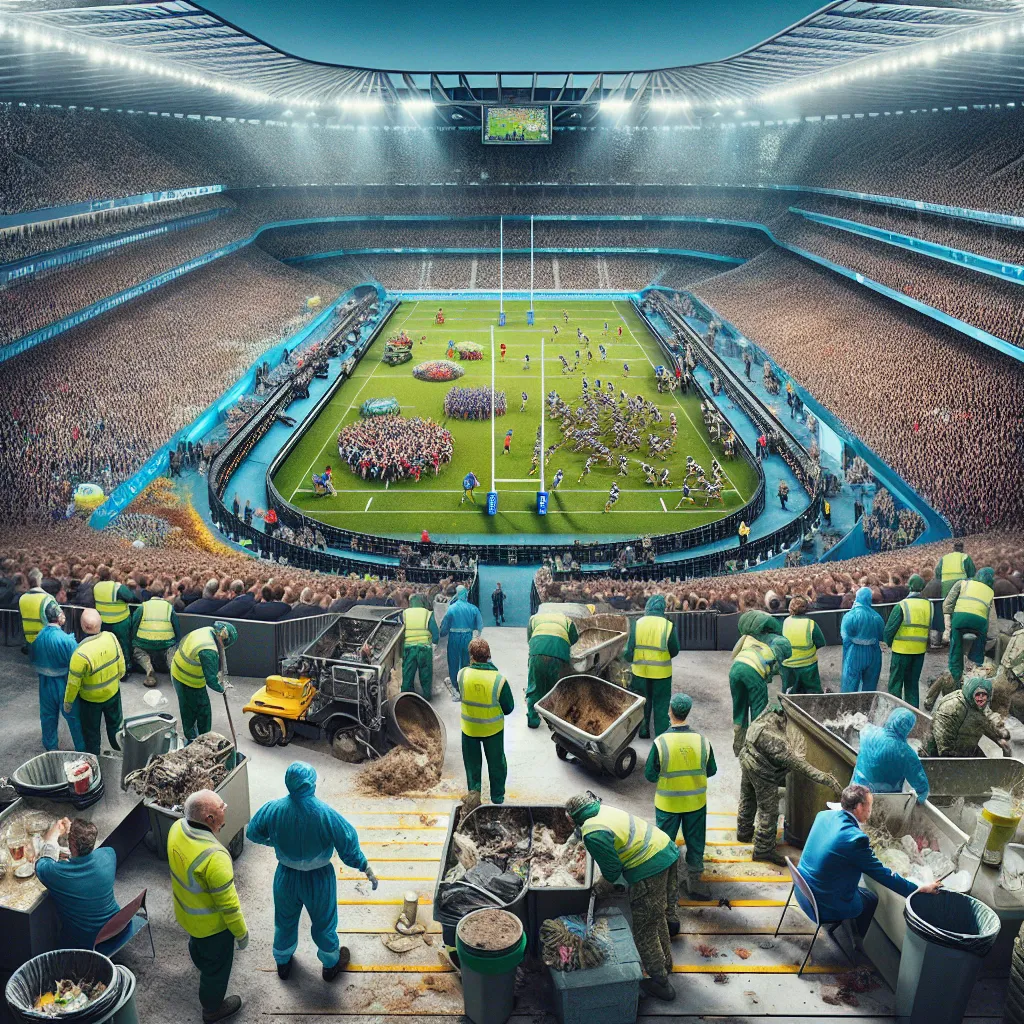Twickenham Stadium in Southwest London—home of English rugby—is buzzing with activity. It’s Saturday afternoon, and the stadium team is gearing up for the England vs. Scotland match, which will take place on Sunday. Expecting a full house of 82,000 fans, the crew has their hands full, especially with a visit from the royal family.
Come Sunday, the stadium starts to fill up with fans who are already making a mess, enjoying the unique privilege of being able to buy alcohol and bring it into the stands. As soon as the game kicks off, so does the cleanup operation. The crew swings into action, cleaning up litter, servicing toilets, and managing the external car parks.
The cleanup crew faces a massive task. Two different compactors on site quickly fill up, and this is just the beginning. The game is on, and as the clock ticks toward halftime, the team isn’t just dealing with public areas; they’ve got to keep the players’ changing rooms spick-and-span too.
During halftime, the team faces a flurry of calls—from emptying bins to dealing with a lack of toilet paper. But this is just a holding operation. The real cleanup starts after the final whistle when the fans finally leave.
As expected, England triumphs with a score of 22-16, but for the cleanup crew led by Scott Hughes, this is just the beginning. Beer-fueled fans and cleaning don’t mix well, making it even more challenging to keep things tidy.
By 8:00 p.m., three hours after the match, the stadium must be spotless by 6:00 a.m. Jamie Belgrave, who runs the nighttime operation, gathers the team for a briefing. His military background helps him approach the job with precision and organization.
The biggest challenge? The seating bowl. Jamie’s team lines up in rows and makes several laps around the stadium. The first lap tackles liquids to prevent stains. The second one focuses on collecting bulk rubbish—resulting in about 500 to 1,000 bags of waste, weighing between 8 and 10 tons.
At 1:00 a.m., with only five hours remaining, the onsite compactors are bursting at the seams. A bin lorry arrives to take away the accumulated trash, but the sheer volume surprises everyone.
After two laps of bulk collection, the team embarks on their final two laps: brooming to remove small fragments and dust, followed by mopping to eliminate any remaining spills. Simultaneously, the crew tackles 800 toilets, 155 hospitality boxes, and 50,000 square meters of carpet.
Finally, as dawn breaks, they’re ready to hand over the stadium. By 6:00 a.m., everything is pristine, and the stadium stands ready for the next event. Job done. That’s how you turn a stadium around in a night.






